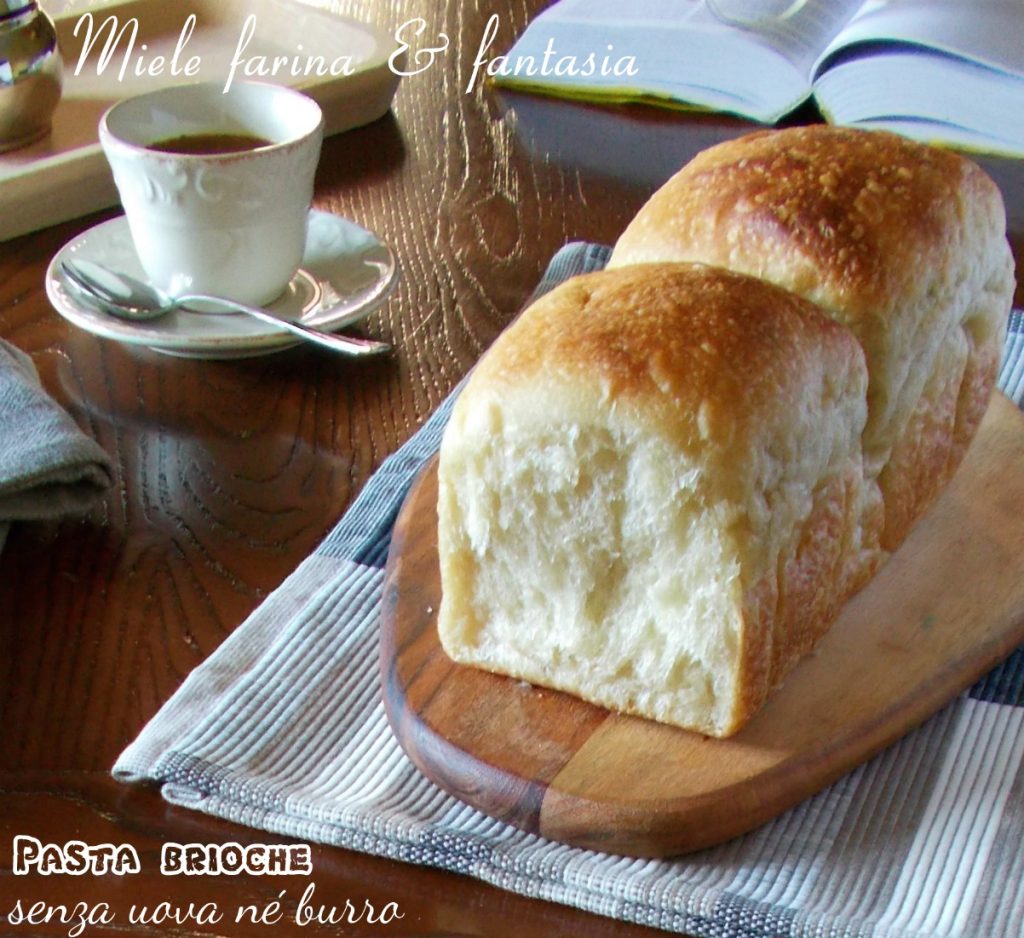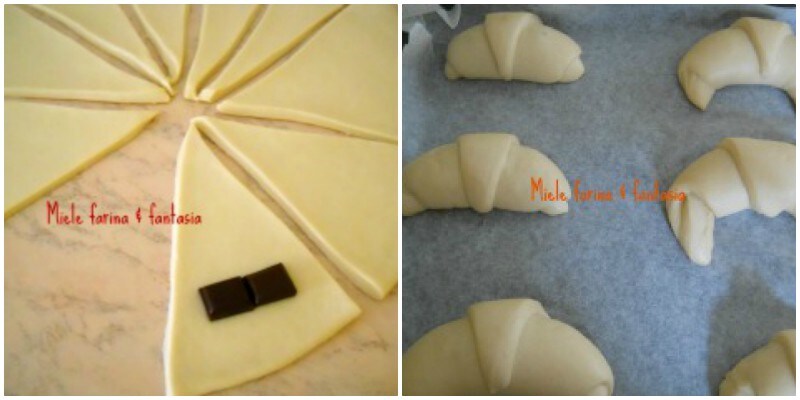The brioche dough without eggs or butter has all the fragrance and softness of traditional brioche. If you want to try your hand at preparing this extraordinary leavened dough, here is the recipe for you. Despite the absence of two of its most classic ingredients, namely butter and eggs, this brioche dough is nothing short of that of pastry chefs, because it is equally versatile and its softness lasts for a couple of days. With this recipe you can prepare gourmet breakfasts and buffets. It’s ideal for children, for those intolerant to lactose and eggs. This recipe is my pride and joy, it’s my creation. I achieved it after much experimentation, because I wanted to create something that was both good and soft like brioche dough, but a little more “light”. The process is long, as it has three leavening stages which give the final product that softness that lasts over time, but it is still very easy and I guarantee it’s worth it. With its mildly sweet flavor, we can create sweet or savory delights. With these amounts, you can make a loaf, two braids to place in two loaf pans (11-inch), or a ring to place in a 12-inch round mold, 12 large brioches, stuffed croissants or a savory or sweet loaf. It can be worked both with a mixer and by hand, as it is a soft and non-sticky dough.

- Difficulty: Easy
- Cost: Economical
- Rest time: 5 Hours
- Preparation time: 20 Minutes
- Portions: 10/12
- Cooking methods: Oven
- Cuisine: Italian
- Seasonality: Autumn, Winter and Spring, All Seasons
Ingredients
- 4 1/3 oz Manitoba Flour
- 1 1/2 oz All-purpose Flour
- 4 cups Water
- 1 tsp Fresh Yeast
- Risen Preferment
- 8 3/4 oz Manitoba Flour
- 3 oz All-purpose Flour
- 2/3 cups Water or fresh fruit juice
- 1/3 cups Light seed oil
- 1/4 cups Sugar
- 1 tsp Fine salt
- to taste Aromas of choice
- 1 packet Vanillin
- 2 1/2 oz Powdered Sugar
- 1 scant tablespoon of water or fruit juice. (to be added to the powdered sugar)
Preparation
Prepare the starter. Dissolve the yeast in water and add it to the sifted flour mix, mix and form a soft dough. Let it rise in a covered bowl; when it has doubled in volume, start preparing the actual dough.
In a large bowl, place the well-risen preferment, sifted flours, sugar, various aromas (grated citrus peel, Strega liqueur, etc.), seed oil, the level teaspoon of fine salt and, with a wooden spoon, start mixing. At this point, slowly pour in the water (or fresh orange juice) (the liquid amounts may vary slightly from those indicated by me based on flour absorption and ambient humidity). The dough will have a very soft but easy-to-work consistency. Continue working it a little in the bowl, turn it onto a well-floured work surface, and work it gently until you get a smooth dough. The dough is ready when it no longer sticks to your hands or leaves the sides of the mixer clean. Set aside to rise in a well-covered bowl.
To prepare the loaf. When the dough has doubled in volume (depending on the season and ambient temperature, it may take about 3 to 6 hours), place it back on the lightly floured work surface and gently divide it into 3 equally sized pieces. Each piece should be worked for about 30 seconds, rolling it on itself several times, until a smooth sphere is formed. Line a loaf pan with parchment paper and place each dough ball inside. Cover and let it rise to the edge.
For baking. For the brioche dough, I recommend gentle baking, starting with an unpreheated oven.
Place the pan with the risen brioche dough in the oven at mid-height. Turn it on and set the temperature to 325°F (maximum 340°F, but I find the best, even softer result is obtained at 325°F). Let it bake for about 35 minutes. It should become evenly golden. Keep an eye on the baking, as everyone knows their own oven. My cooking and timing indications refer to my static gas oven.
Remove the loaf from the pan at the end of baking, using the parchment paper, but do not touch or cut it until it is cold, as it is so soft it might break.
To glaze the loaf. When it is cold, mix the water and powdered sugar and brush it until it is covered.
To prepare croissants or brioches: Turn the egg-free and butter-free brioche dough out onto the lightly floured table, roll it out with a rolling pin without crushing or mistreating it too much and try to give it a round shape. Use a pizza cutter to divide it into wedges of the desired size, fill them, and then roll them starting from the long side and continuing towards the point. Arrange them on a baking sheet, about two fingers apart, and let them rise again, well covered. For baking: follow the loaf instructions.



